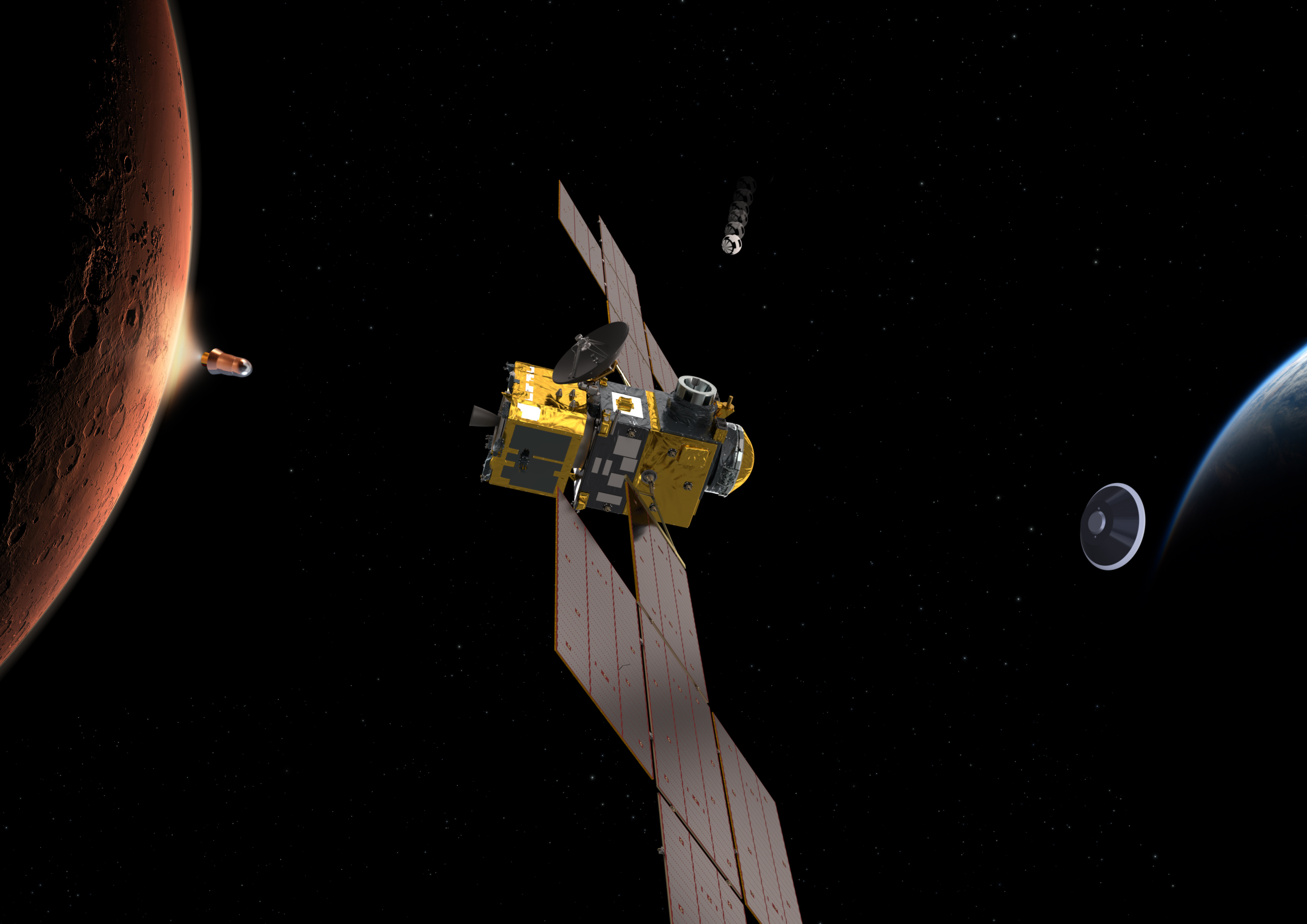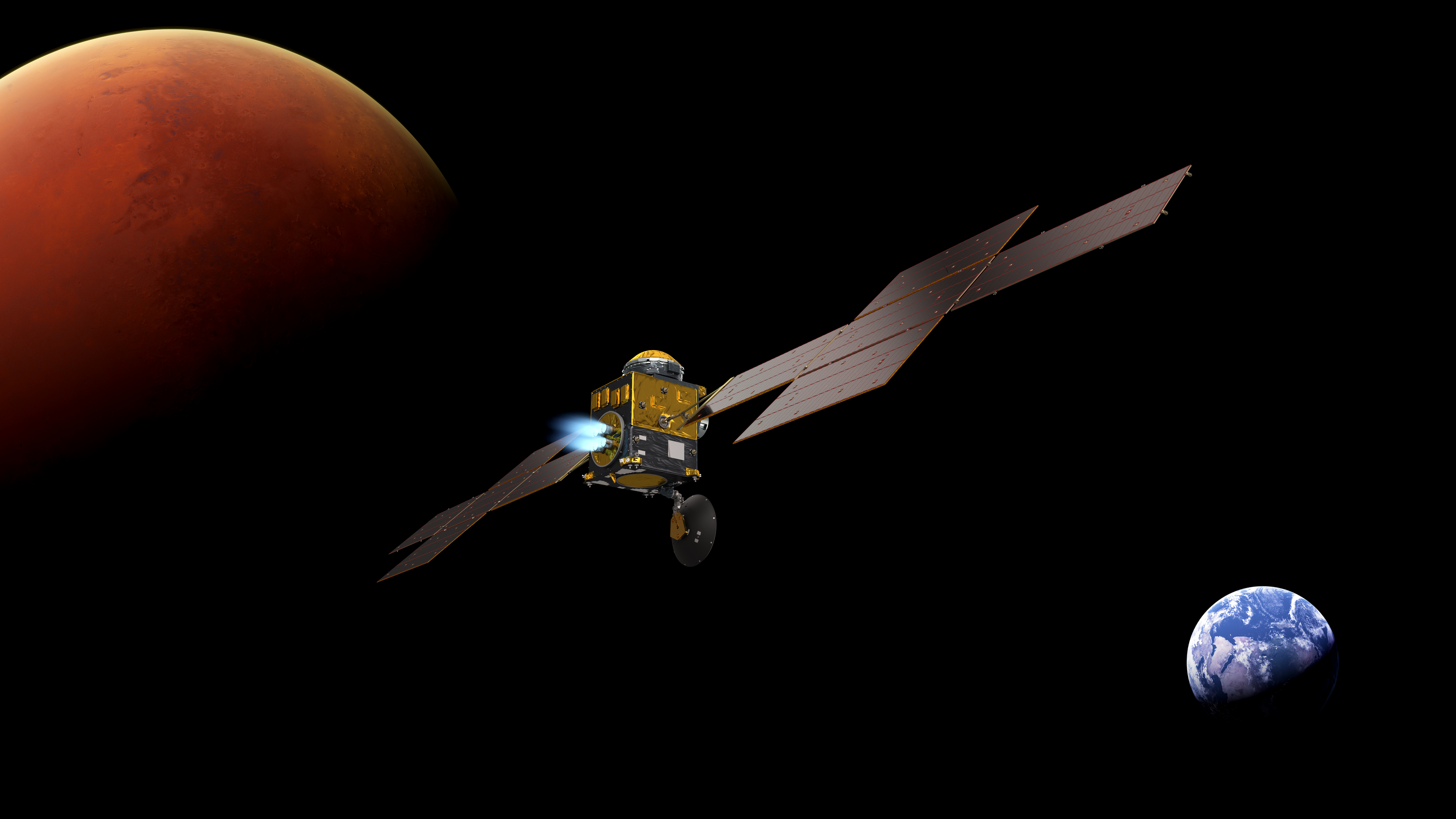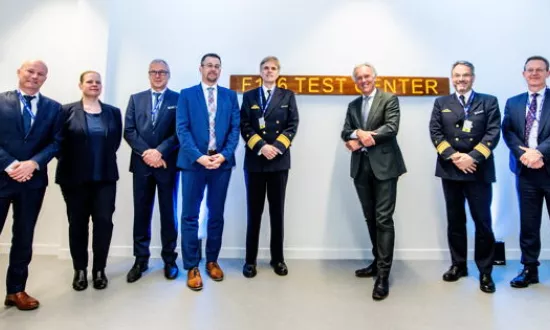Thales Alenia Space selected by Airbus as partner to the Mars Sample Return Mission
A new decade of European exploration – to the Moon and Mars
Thales Alenia Space technology and expertise will contribute to the Earth Return Orbiter which will bring Red Planet samples back to Earth
Turin, October 14, 2020 – Thales Alenia Space, the joint venture between Thales (67%) and Leonardo (33%), has signed an Authorization To Proceed (ATP) with Airbus Defence and Space, prime contractor of the program, to contribute to the Earth Return Orbiter (ERO), the key element of the Mars Sample Return (MSR) Mission, which will be carried out through an international cooperation led by NASA. A first tranche, worth around €11 million, will be related to the B2 phase for a global contract value of around €130 million.

Thales Alenia Space will be responsible for:
- supplying the Communication System, consisting of the elements allowing the data transmission between Earth and ERO and Mars
- designing the crucial Orbit Insertion Module (OIM) and related thermo-mechanical, propulsion and electrical architectures
- the Assembly Integration and Test (AIT) phase for the Proto-Flight model of the ERO Spacecraft composing elements in its test facilities of Turin and Toulouse.
The Earth Return Orbiter spacecraft is composed by the Return Module and the Orbit Insertion Module. The Return Module (RM) hosts the NASA payload devoted to the capture of the Martian samples orbiting around Mars, of their containment and delivery to Earth. The Orbit Insertion Module (OIM) is an additional chemical propulsive stage, for inserting the spacecraft into Mars orbit. This module is crucial as he will allow to reduce the spacecraft velocity enabling the Martian gravity to capture ERO in a stable orbit. After the maneuver successfully completed, IOM will be separated from RM in order to save mass prior to the return to Earth.
Leonardo is also widely involved in Mars exploration missions, from the ExoMars 2016 and 2022 missions to the Mars Sample Return program. On this latter program, Leonardo is studying and designing the two robotic arms that will collect and transfer the Martian samples on the Mars Ascent Vehicle (MAV).

About the Mars Sample Return mission
By 2031, the Mars Sample Return mission will collect in situ Mars surface samples and bring them back for study in terrestrial laboratories. Firstly, the MSR Sample Retrieval Lander will descend to the planet’s surface carrying the Sample Fetch Rover (SFR) and the Mars Ascent Vehicle (MAV). SFR will collect the samples from the Martian surface that have been cached by the NASA Mars 2020 Perseverance rover and the SFR will transfer these samples into Mars Ascent Vehicle, a mini-rocket developed by NASA, which will launch them into Mars orbit. In that moment, the ERO spacecraft, that will be launched in 2026, will be ready to locate and capture the samples released by the MAV. After the capture, the samples will then be sealed in a biological containment system and placed inside an Earth Entry Vehicle. ERO will then leave Martian orbit and head back to Earth. When it arrives back in Earth orbit, it will release the Earth Entry vehicle that will be recovered on ground and the sample analyzed.
ABOUT THALES ALENIA SPACE
Drawing on over 40 years of experience and a unique combination of skills, expertise and cultures, Thales Alenia Space delivers cost-effective solutions for telecommunications, navigation, Earth observation, environmental management, exploration, science and orbital infrastructures. Governments and private industry alike count on Thales Alenia Space to design satellite-based systems that provide anytime, anywhere connections and positioning, monitor our planet, enhance management of its resources, and explore our Solar System and beyond. Thales Alenia Space sees space as a new horizon, helping to build a better, more sustainable life on Earth. A joint venture between Thales (67%) and Leonardo (33%), Thales Alenia Space also teams up with Telespazio to form the parent companies’ Space Alliance, which offers a complete range of services. Thales Alenia Space posted consolidated revenues of approximately 2.15 billion euros in 2019 and has around 7,700 employees in nine countries. www.thalesaleniaspace.com
THALES ALENIA SPACE – PRESS CONTACTS
Sandrine Bielecki
Tel: +33 (0)4 92 92 70 94
sandrine.bielecki@thalesaleniaspace.com
Catherine des Arcis
Tel: +33 (0)4 92 92 72 82
catherine.des-arcis@thalesaleniaspace.com
Marija Kovac
Tel: +39 (0)6 415 126 85
marija.kovac-somministrato@thalesaleniaspace.com


